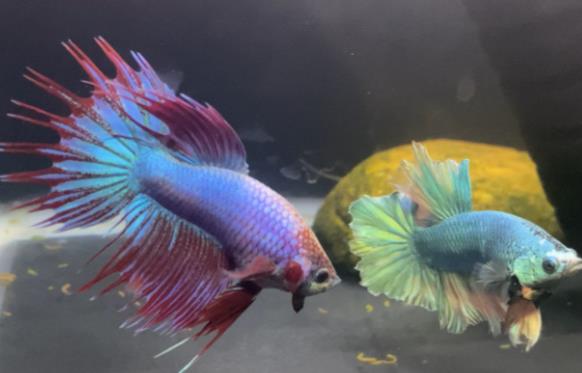Here’s a detailed guide to betta fish nutrition, combining scientific feeding practices with their dietary needs:

I. Recommended Staple Foods
Commercial Pellets
Opt for floating pellets with a protein content of over 40% (such as Hikari Bio-Pure B1/C1), with a diameter of around 1mm for easy consumption. Adult bettas should be fed 5-8 pellets daily, while juvenile fish require crushed pellets or powdered food.
Live and Frozen Foods
Live foods like brine shrimp, bloodworms, and daphnia should be disinfected before feeding, offered 2-3 times a week to supplement protein. Frozen bloodworms must be fully thawed to avoid spoilage, which can cause bloating.
Plant-Based Supplements
Small amounts of blanched spinach or carrots can provide vitamins, making up no more than 20% of their total diet.
II. Feeding Frequency and Tips
Adult fish: Feed 1-2 times daily (once in the morning and once in the evening), with each meal finished within 3 minutes.
Juveniles/breeding fish: Feed 3-4 times daily, using small amounts of ultra-fine brine shrimp eggs to support growth.
Important Notes:
Reduce feeding on rainy days to prevent oxygen depletion in the water.
New fish should be allowed to acclimate for 1 day before feeding; during this period, live food can be used to encourage eating.
III. Risk Warnings
Overfeeding: Can lead to enteritis or water quality issues, indicated by white feces or bloating.
Live food handling: Always rinse and disinfect live food to prevent parasite infections.
Before and after water changes: Stop feeding for 2 hours to reduce digestive stress.
A varied diet with precise portion control helps maintain your betta’s health and vibrant coloration.
